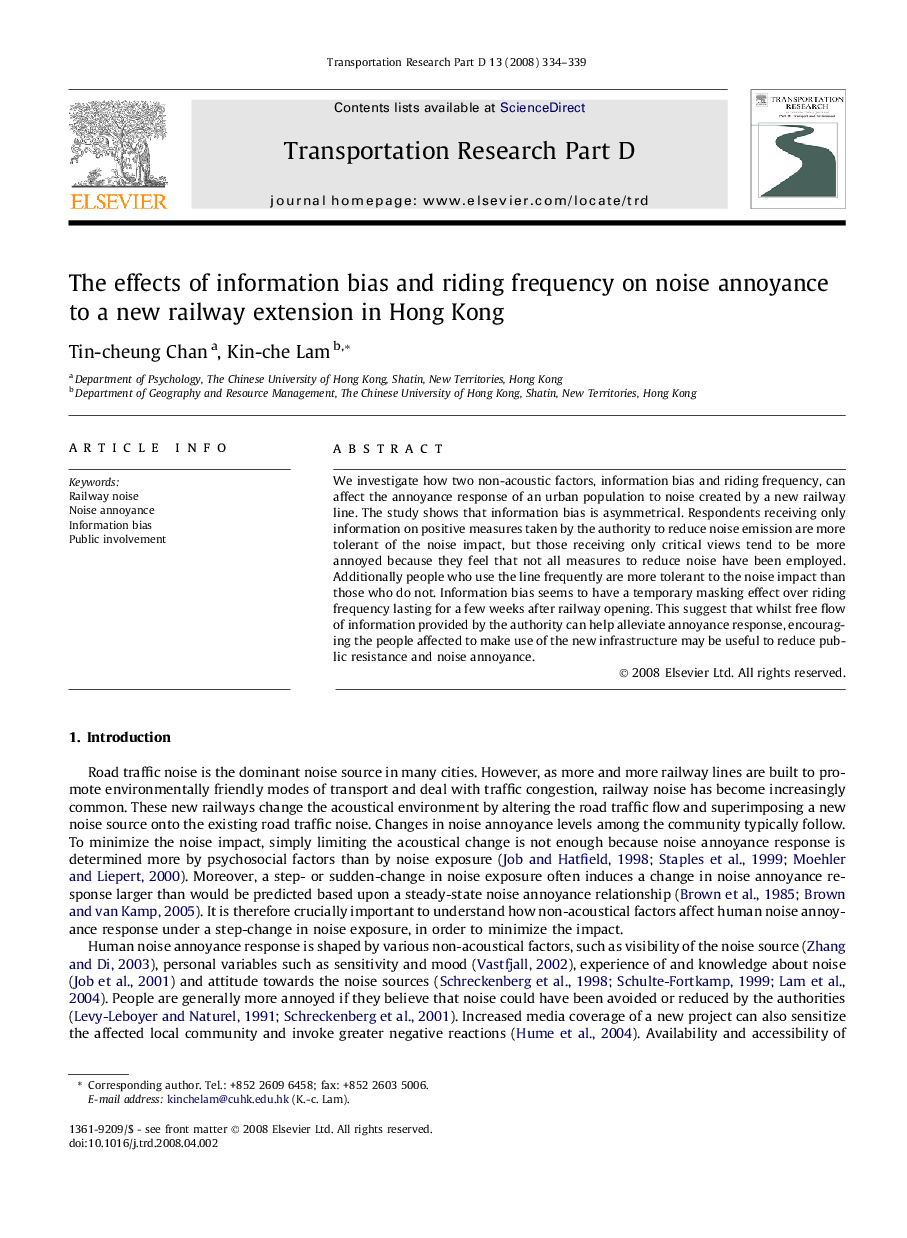| Article ID | Journal | Published Year | Pages | File Type |
|---|---|---|---|---|
| 1066551 | Transportation Research Part D: Transport and Environment | 2008 | 6 Pages |
Abstract
We investigate how two non-acoustic factors, information bias and riding frequency, can affect the annoyance response of an urban population to noise created by a new railway line. The study shows that information bias is asymmetrical. Respondents receiving only information on positive measures taken by the authority to reduce noise emission are more tolerant of the noise impact, but those receiving only critical views tend to be more annoyed because they feel that not all measures to reduce noise have been employed. Additionally people who use the line frequently are more tolerant to the noise impact than those who do not. Information bias seems to have a temporary masking effect over riding frequency lasting for a few weeks after railway opening. This suggest that whilst free flow of information provided by the authority can help alleviate annoyance response, encouraging the people affected to make use of the new infrastructure may be useful to reduce public resistance and noise annoyance.
Related Topics
Life Sciences
Environmental Science
Environmental Science (General)
Authors
Tin-cheung Chan, Kin-che Lam,
